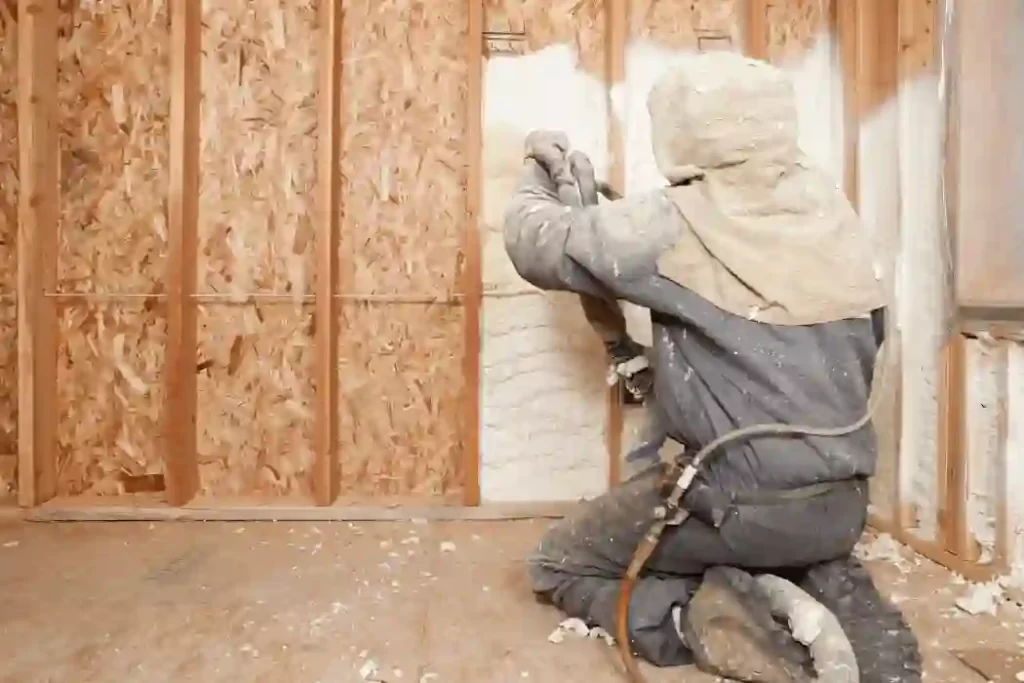Noise pollution is a growing problem in modern cities and urban areas. It has been shown to have adverse effects on health, including sleep disturbances, hearing loss, and even cardiovascular diseases. As a result, there is a need to reduce the amount of noise pollution in our daily lives. One way to do this is by using insulation. Insulation can help to reduce noise pollution in buildings by blocking sound from entering or leaving a space. In this article, we will explore the role of insulation in reducing noise pollution.
What is Insulation?
Insulation is a material that is used to prevent the transfer of heat or sound between two areas. It can be made from a variety of materials, including fiberglass, foam, and cellulose. Insulation is typically installed in the walls, floors, and ceilings of buildings to help keep the temperature inside the building stable and comfortable. However, insulation can also play a crucial role in reducing noise pollution.
How Does Insulation Reduce Noise Pollution?
Insulation works by absorbing sound waves and preventing them from traveling through a building. When sound waves hit an insulated surface, they cause the insulation to vibrate. This vibration absorbs the sound energy, reducing the amount of sound that can pass through the insulation. In addition, insulation can also reduce the amount of sound that is reflected off of surfaces, further reducing the amount of noise that is heard in a space.
Insulation can be particularly effective in reducing airborne noise, which is noise that travels through the air. Examples of airborne noise include traffic noise, airplane noise, and noise from nearby construction sites. Airborne noise can be particularly problematic in urban areas, where there are high levels of traffic and other sources of noise pollution. During a home renovation, implementing proper insulation can significantly reduce the impact of noise pollution, creating a quieter and more peaceful living environment for you and your family.

Types of Insulation
There are several types of insulation that can be used to reduce noise pollution. These include:
- Fiberglass Insulation: Fiberglass insulation is made from glass fibers that are spun into a material that can be used to insulate buildings. It is a common type of insulation and is often used in walls, floors, and ceilings. Fiberglass insulation can be effective at reducing noise pollution, especially at higher frequencies.
- Mineral Wool Insulation: Mineral wool insulation is made from rock or slag that is melted and spun into fibers. It is a dense material that is effective at reducing low-frequency noise, such as the rumble of heavy machinery.
- Cellulose Insulation: Cellulose insulation is made from recycled paper products, such as newspapers and cardboard. It is often blown into walls and ceilings and can be effective at reducing airborne noise.
- Foam Insulation: Foam insulation is made from a variety of materials, including polyurethane and polystyrene. It is often used in walls and ceilings and can be effective at reducing airborne noise.
Choosing the Right Insulation
When choosing insulation to reduce noise pollution, it is important to consider the type of noise that is present in the space. For example, if the noise is primarily high-frequency noise, such as traffic noise, fiberglass insulation may be the best choice. If the noise is primarily low-frequency noise, such as the rumble of heavy machinery, mineral wool insulation may be the best choice.
In addition to considering the type of noise, it is also important to consider the thickness and density of the insulation. Thicker and denser insulation will be more effective at reducing noise pollution than thinner and less dense insulation.
Other Factors to Consider
While insulation can be effective at reducing noise pollution, it is important to note that it is not a cure-all solution. There are other factors that can contribute to noise pollution in a building, such as gaps around doors and windows and poorly designed ventilation systems. Addressing these factors in addition to using insulation can help to further reduce the amount of noise pollution in a space.
Conclusion
Noise pollution is a growing problem in modern cities and urban areas. It has been shown to have adverse effects on health, including sleep disturbances, hearing loss, and even cardiovascular diseases. Insulation can play a crucial role in reducing noise pollution by absorbing sound waves and preventing them from traveling through a building. There are several types of insulation that can be used to reduce noise pollution, including fiberglass, mineral wool, cellulose, and foam insulation. When choosing insulation to reduce noise pollution, it is important to consider the type of noise and the thickness and density of the insulation. It is also important to address other factors that can contribute to noise pollution, such as gaps around doors and windows and poorly designed ventilation systems. By taking these steps, we can work to reduce the amount of noise pollution in our daily lives and improve our health and well-being.

